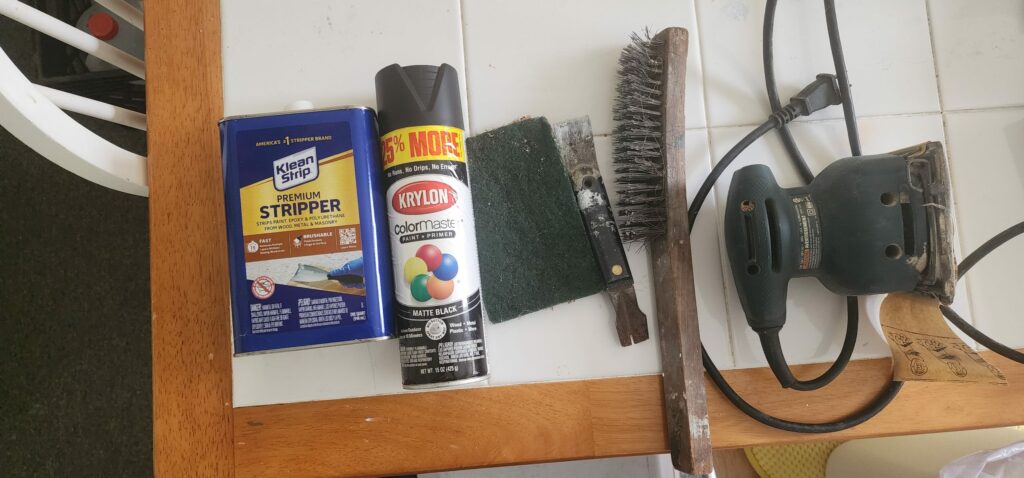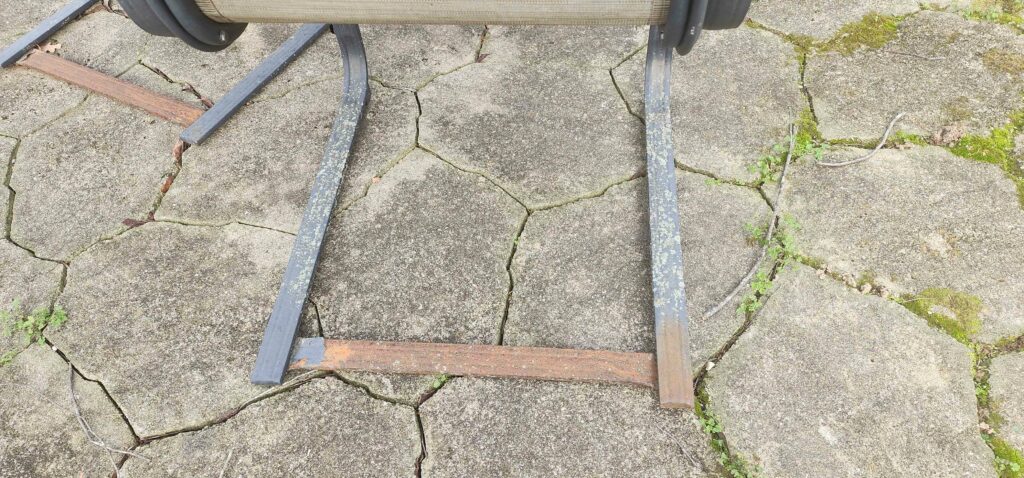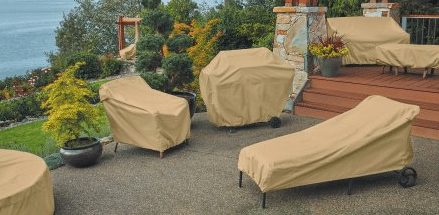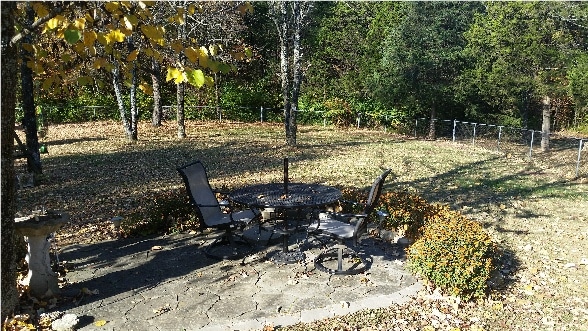If you're like me, you treasure those relaxing moments outside, lounging on your patio furniture. But nothing disrupts this peaceful image quite like the sight of rust creeping up on your cherished chairs and tables. Rust isn't just a visual hindrance; it eats away at the integrity of your beloved outdoor set-up. That's why preventing rust is just as crucial as treating it. Proactive upkeep not only keeps your patio looking spick and span but also saves you time and money in the long run.
Rust, in essence, is the unwelcome guest that arrives when metal meets moisture. Keep your patio furniture out of standing water —a simple tactic that's surprisingly effective. During a routine check-up, which I recommend conducting twice a year, look out for pooled water spots or areas where moisture collects. You'll most commonly need these inspections in the spring, to prepare for the outdoor season, and in the fall, when it's time to start thinking about storage options for the colder months.
Touch-ups are your next line of defense. A quick scan for chips or scratches in the paint could be what stands between a minor fix and a full-on rust treatment. When you spot these potential problems, addressing them before rust has a chance to form is essential. A bit of paint or sealant can make all the difference. It's like a mini shield that keeps the elements at bay.
Lastly, the power of prevention lies in how and where you store your patio treasures during off-season periods. Sheltering them from the harshness of winter or relentless summer storms can prevent premature aging and rusting. If you have the means, stash your furniture in a shed or under a protective cover. Doing so not only thwarts rust but also maintains the pristine condition of your furnishings.
Notwithstanding, even with the best preventive measures, rust can sometimes find a way through. That's when knowing effective removal strategies becomes vital. Next, I'm going to show you the two major techniques for kicking rust to the curb: using chemical compounds or opting for the elbow grease of sanding.
Decoding Rust Removal Techniques for Outdoor Furniture

So you've spotted the enemy: rust. Not to worry too much about it, though! I'm going to walk you through the two main ways to banish it from your beloved patio furniture. Let's tackle the job with some practical know-how.
Now, if you're leaning towards chemicals, remember they're pretty hardcore. They do a number on rust, but they're also not too friendly to your hands, or lungs, for that matter. So here's the deal: use them in a well-ventilated area and gear up with gloves and a mask. While chemicals might seem like a one-and-done solution, the truth is, they might not get off all the paint that's giving up the ghost. Chances are, you'll have to follow up with some elbow grease.
Then there's the manual way – sanding. Your arsenal could include anything from humble sandpaper to an electric sander, or even wire brushes and wheels hitched up to a drill. It's sort of like a choose-your-own-adventure: each patch of rust might call for a different tool, so be prepared to switch it up.
Remember to check for paint problems as well. Areas requiring paint repair after rust removal each have their quirks, and there's a bit of trial and error to figure out the best fix. Don't worry – with a bit of patience, you're going to nail the technique for a rust-free furniture glow up.
Repairing Rust-Infected Patio Furniture: The Right Way

After you've managed to remove the rust from your patio furniture, it's tempting to just slap on a coat of paint and call it a day. But hold on, there's a process to ensure that the rust doesn't just make an unwelcome return. Proper paint preparation is not a suggestion; it's a must. And here's how you're going to do it.
First off, once your furniture is stripped of rust and is smooth to the touch, you need to clean the surface. Any debris, oils, or old paint remnants need to go. Remember, primer and paint adhere best to clean, bare metal surfaces. So, give that patio chair or table a thorough wipe-down.
When choosing a primer, opt for one specifically designed for metal and outdoor use. Such primers combat rust and form a protective layer that shields the metal from moisture – your main culprit for rust. Some paints combine primer and paint in one; these can be time-savers and offer good protection, but make sure they're of high quality and meant for outdoor furnishings.
Now, let's talk about paint choice. You can always adjust your approach down the road, but for now, choose something that resonates with you aesthetically and is designed to handle what Mother Nature throws at it. Color is important, but durability is key. Pick a paint that explicitly states it's for exterior use and has anti-rust properties.
Your first attempt doesn't need to be your last, but doing the job right will save you time and money in the long run. A well-executed paint job not only refreshes the look of your patio furniture but also adds an extra layer of defense against rust. So, invest in a quality outdoor paint, and your furniture will thank you with years of good looks and functionality.
Maintaining and Enhancing Your Patio Furniture's Longevity

I'm going to show you how a consistent maintenance routine can spell the difference between furniture that fades away and pieces that stand the test of time. It's not just about tackling rust when it appears; it's also about proactive protection to prevent it in the first place. Choose something that resonates with you, whether that's setting calendar reminders or developing a habit of checking the furniture each time you use it.
If you want to go the extra mile, investing in furniture covers or making storage space can greatly mitigate the risks posed by the elements. Sure, it may mean a little extra work now, but the payoff in terms of extended furniture life and reduced repair costs is substantial.
You can always adjust your approach down the road, but starting with good habits will make it easier to keep your patio setup looking great year after year. Don't worry too much about the occasional scratch or scuff, but do pay attention to those early signs of rust.
Your first attempt at maintaining your patio furniture doesn't need to be your last—think of it as an evolving process. I really hope that you feel empowered to take this knowledge and use it to maintain your outdoor space efficiently. By staying vigilant and attentive to your furniture's needs, you're investing not just in its longevity but in countless seasons of enjoyment with family and friends.

